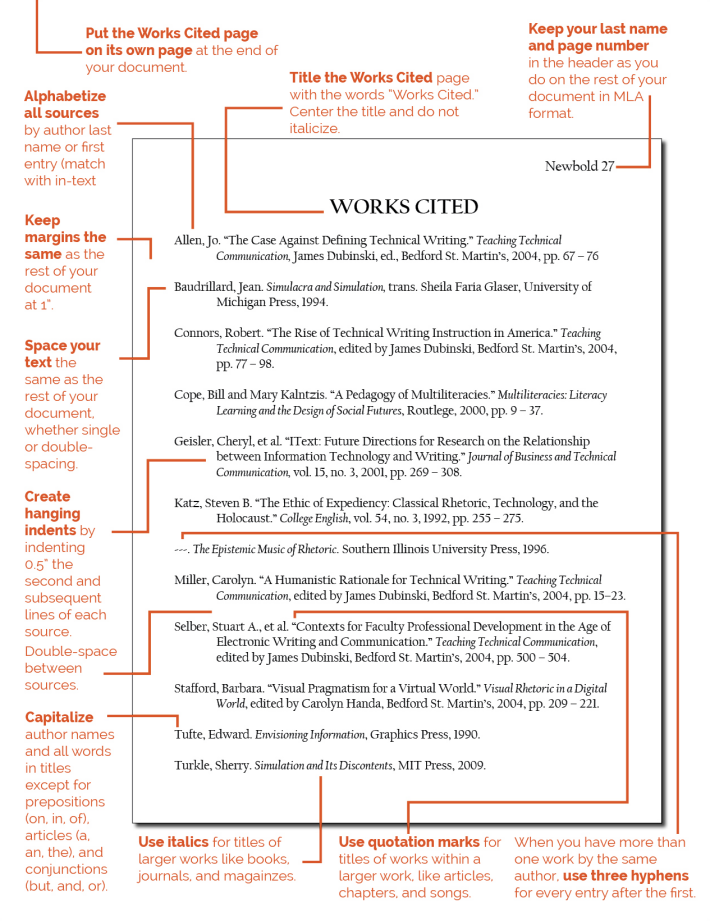Readings
Tips on Formal Writing, Revisited
Alphabetize the citations on your Works Cited pages. Select each citation, then Ctrl+T, to create a hanging indent. Please note that articles are in quotation marks. Titles of publications and databases are both in italics.
Always proofread carefully for minor errors. I recommend loading Grammarly in your browser; it’s free. Always check every line for punctuation and capitalization errors. Check for missing commas — a frequent mistake. Make certain to capitalize proper nouns properly.
Sometimes paragraphs can run a little long (which is okay) and a little rambling (which is not). A basic approach to keep your paragraphs focused on a single idea is, simply, to keep your paragraphs brief.
Thus, I suggest breaking up writing into brief paragraphs, each with a clear topic sentence, then using the ideas that follow from that for the rest of the paragraph. You can have lots of brief paragraphs, if you need them, which helps make things easier to read and follow along with, especially on a screen — where most people read nowadays.
If it’s a long paragraph, look to see where it pivots to other topics, and add a paragraph break there; you’ll often find a topic sentence there, waiting for you to notice.
Remember that a “page” of text is 250 words. If you have a paragraph of something close to that length, you can undoubtedly enhance your writing’s clarity by adding a few paragraph breaks. Make things easier for your readers (and yourself) by using brief, clear paragraphs.
You may want to use subheadings (instead of overly long paragraphs) to group larger points, since they offer so much clarity (from so little work). Find subheading formatting help here.
The compare, contrast, and combine aspects of the three sources are what need to be emphasized most. Do not digress or grandstand. Just make your points once, offer specific details to illustrate — and PROVE — your points, then move on.
In formal writing, use formal phrasing. Clarity is key. “A lot of” slang, and “like” casual phrasing, can be “pretty” vague. Vague writing is often unclear. Use specific details to add clarity to your writing.
Complete these readings as you work through Unit Five:
- Synthesizing Sources
- Summary, Synthesis, and Analysis of Sources
- Synthesizing Texts – What and Why?
- On Paragraphs
- Quoting, Paraphrasing, Summarizing
- Avoiding Plagiarism
- Safe Practices
- MLA Style
- MLA- In-text Citations
- MLA- Formatting Quotations
- MLA- Works Cited Page
- MLA- Citing Books
- MLA- Citing Electronic Sources
- How to Write Masterful Topic Sentences for Essays
- How to Use Transition Sentences for Smoother Writing
- All About Transition Words

